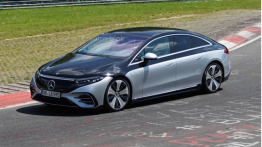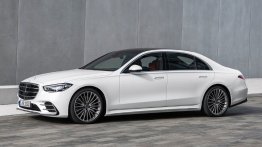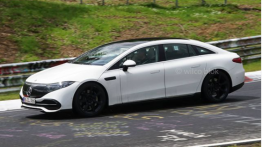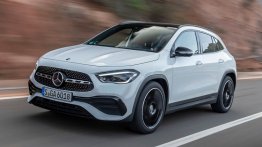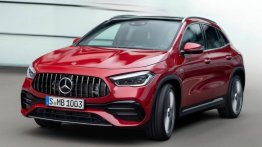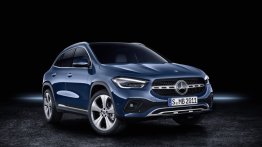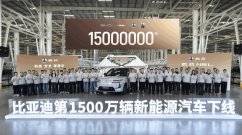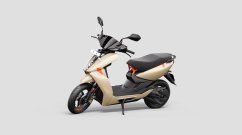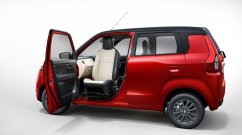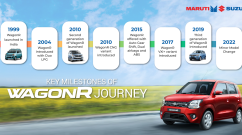More than a century ago, the three points of the Mercedes star stood for Gottlieb Daimler’s vision of mobility on land, on the sea and in the air. In the new Mercedes‑Benz campaign, they also symbolise responsible handling of the elements – through resource conservation, recycling, and CO2-neutrality. The elements earth, water and air are, more than ever, the drivers of the Mercedes‑Benz brand.
Campaign details
The campaign will be played out in the core markets of Mercedes‑Benz worldwide from the beginning of February 2023.
The campaign singles out actions that address the goals of the sustainable business strategy of Mercedes‑Benz. By the end of this decade, the company plans to go fully electric and reduce the CO2 footprint per car by more than half compared with 2020. Mercedes‑Benz intends to cover more than 70 per cent of the energy requirements in production with renewable energies by 2030. This will be achieved through the expansion of solar and wind energy at its own locations and through the conclusion of further corresponding power purchase agreements.
By 2030, Mercedes‑Benz is ready to go fully electric
With the Ambition 2039, Mercedes‑Benz is pursuing a holistic approach more consistently than ever on the way to a fully electric mobility future. The aim is to launch a fleet of new cars and vans that will be CO₂-neutral along the entire value chain and lifecycle from 2039, partly including offsets. Mercedes‑Benz already offers a battery-electric model in all segments in which the brand is represented.
From 2025, all new vehicle architectures will be purely electric. To also avoid CO2 emissions when electric cars are in use, Mercedes me Charge has been enabling green charging at public charging points in Europe, the USA and Canada since 2021. As one of the world’s largest and constantly growing charging networks, it has over a million charging points, including over 400,000 in Europe.
By 2027, Mercedes‑Benz will also set up its own global high-power charging network in North America, Europe, China and other core markets with 2,000 locations and over 10,000 charging points.
Since last year, the production of vehicles and batteries has been CO2-neutral in all of Mercedes‑Benz’s own plants, partly including offsets. Since 2022, all of Mercedes‑Benz AG’s own production plants worldwide have been using only green electricity from renewable sources. The suppliers are also included. The brand with the star has made CO2-neutrality an important criterion within its procurement processes and for awarding contracts: The goal is that from 2039 at the latest, only products that are CO2-neutral in all stages of the value chain will pass through the Mercedes‑Benz factory gates.
Sustainable battery life-cycle
Mercedes‑Benz also takes a holistic approach to the battery life cycle: re-use, remanufacture, recycle. Mercedes‑Benz offers remanufactured batteries for all electric vehicles to do justice to the concept of a closed economic cycle and to conserve resources. In addition, the subsidiary Mercedes‑Benz Energy has established a successful business model with stationary large-scale storage applications. Batteries that can no longer be used in the vehicle can continue to be used in a second-life storage system.
With a view to the future return of lithium-ion battery systems from Mercedes‑EQ vehicles, Mercedes‑Benz has expanded its global battery recycling strategy and is starting to set up its own battery recycling factory based on hydrometallurgy in Germany. The company is thus increasing the recycling rate to more than 96 per cent and consistently expanding its own expertise in the area of battery value creation.
Conservation of resources and avoidance of waste: 40 per cent recycled materials in vehicles by 2030
Mercedes‑Benz is working intensively on closing material cycles and increasing the proportion of recycling materials to conserve primary resources, avoid waste and also reduce CO2 emissions. In addition to recycled steel and aluminum, a large number of innovative recyclates are already in use. For example, the plastic replacement material UBQTM, which is made from upcycled household waste, is used in the cable ducts of the EQS and EQE. Later this year, the EQE and the S‑Class will be the first production models to have bow door handles made from chemical recycling, in the manufacture of which fossil raw materials have been replaced by biomethane and pyrolysis oil from recycled scrap tyres.
A nylon yarn is used for the floor coverings in the EQS, which is obtained from recyclable materials such as fishing nets and carpets. In addition to high-quality man-made leather and a microfibre fleece, Mercedes‑Benz offers various fabrics for the vehicle interior which can be up to 100 per cent made from recycled PET bottles. With the VISION EQXX technology programme, Mercedes‑Benz is impressively demonstrating the potential for sustainable luxury made from innovative materials: animal-free leather alternatives based on cactus and mushroom mycelia, carpets made from bamboo fibres and interior door handles made from a biotechnologically produced, vegan, silk-like fabric.
Mercedes‑Benz is also pursuing the goal of decarbonisation in the steel supply chain and relies deliberately not on compensation, but rather on avoiding and reducing CO2 emissions. In the first step, the company is consistently reducing CO2 emissions in the steel supply chain – for example by using CO2-reduced flat steel from Salzgitter Flachstahl GmbH, which is made from 100 per cent scrap in the electric arc furnace. Compared to the classic blast furnace route, the micro-alloyed grades have CO2 emissions reduced by more than 60 per cent. From 2025, Mercedes‑Benz will use steel in the vehicle production of various models that will be almost CO2-free due to the production with hydrogen instead of coking coal. For example, the company was the first automobile manufacturer to invest in the Swedish start-up H2 Green Steel (H2GS).

